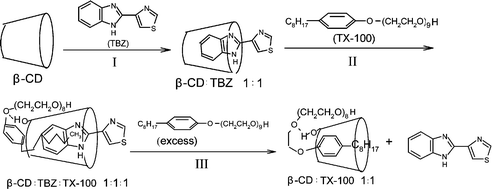Highly sensitive and selective room-temperature phosphorescence determination of thiabendazole by the supramolecular interaction of thiabendazole/β-cyclodextrin/triton X-100
Abstract
A strong and stable room temperature phosphorescence (RTP) signal (λex/λem
= 298/481 nm) resulting from a 1 ∶ 1 ∶ 1 β-cyclodextrin (β-CD)/


 Please wait while we load your content...
Please wait while we load your content...